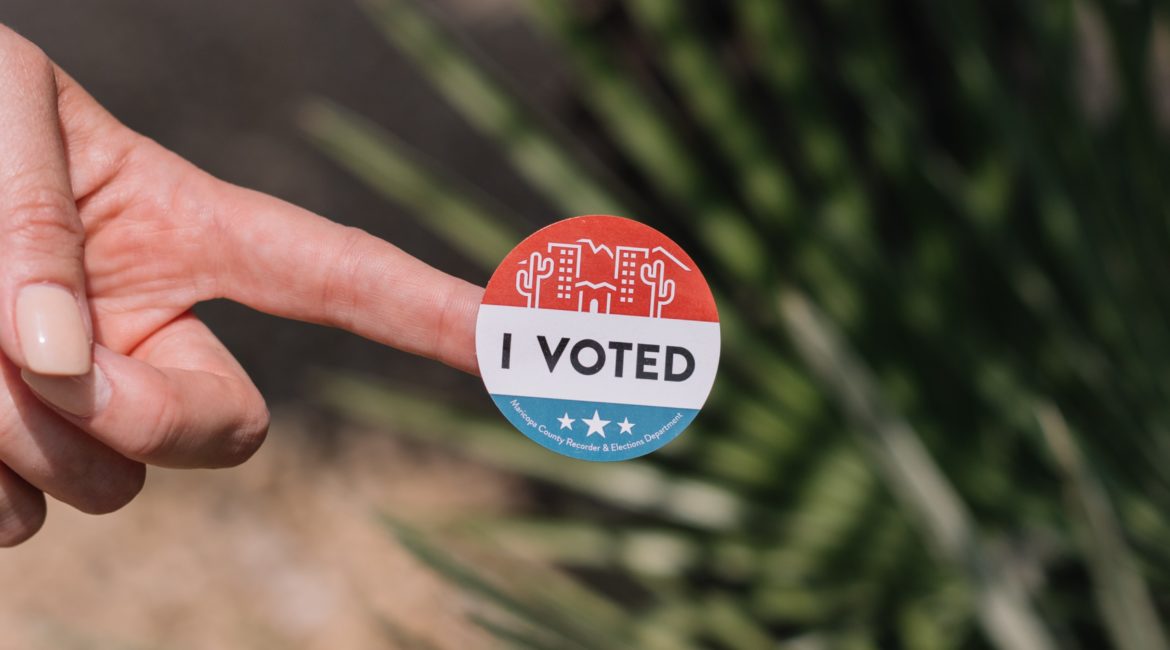It’s no secret that 2020 has felt vastly different from any year preceding it, putting this year’s election cycle (already the subject of more critical attention than other years) under an even brighter lens. Over the past few months, the social landscape has also shifted as more individuals, businesses and brands joined the political conversation and committed to using their platforms to encourage positive change. Now that we are in the final countdown to the election, this social chatter has only grown in volume.
All major platforms have jumped in: Instagram has added a banner for users to confirm their voter registration status; Twitter’s promoted posts are centered around polling locations; Spotify has even partnered with Headcount for a campaign called “Register to Vote with Spotify.” Low voter turnouts have been common in past election cycles, and it seems many are doing their part to rectify this by working to engage people of all ages in the social space.
This “trend,” if it’s even fair to characterize it that way, has spilled into action beyond just digital talk, though. With so many theaters and venues still dark, Live Nation has decided to activate these spaces as polling places and has begun encouraging voter participation among customers and employees alike. With more than a hundred venues already being explored for the conversion to polling sites, Live Nation has also committed to paid time off for employees on election day and offering incentives for employees who choose to jump in as poll workers.
Similarly, Foot Locker has partnered with Rock The Vote in a major announcement that a staggering 2,000 Foot Locker stores are set to become voter registration sites. The company dropped the announcement on September 22nd, National Voter Registration Day, which is a non-partisan campaign to register voters every year that began in 2012 and has since resulted in nearly 3 million voter registrations. CNN reported that this year – inescapable on the day itself across all social platforms – was the most successful yet: according to the organization, 200,000 people submitted voter registration applications or confirmed their registration across all sites that use Rock the Vote’s platform.
While this preparatory phase to make sure people are ready to vote is undoubtedly critical, election day itself will hold more changes, trickling down from corporate headquarters across social announcements and into our timelines. Lyft announced Ride to Vote, an initiative designed to help people get to their voting sites. According to research from Lyft via Civic Youth, 15 million eligible voters didn’t go to the polls during the last presidential election in large part because they lacked a way to get there. Through discounted rides, Lyft is hoping to decrease this number.
More companies are also jumping on the trend of designation Election Day a “holiday” or offering PTO where possible. Verizon became the most recent global company to join the conversation, announcing that it would give U.S. workers up to four hours of paid time off on Election Day. Apple, in July, announced the same. Uber’s CEO, in June, announced that the company would make election days around the world company holidays, and would use Uber and Uber Eats resources to help individuals register to vote, get to the polls and feed people in line waiting to vote. This upcoming election in the U.S. will be a major milestone since this announcement was first made.
In just a few weeks, voter turnout and changes in numbers will be revealed – but if social trends are any indicator, this year’s election will be one for the books in every sense.
Can Social Media Swing the Vote?

